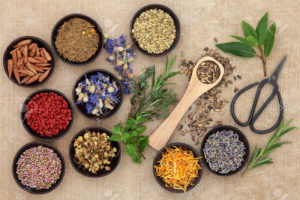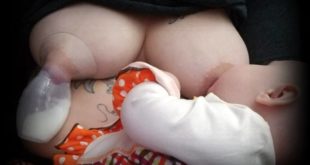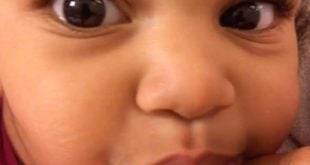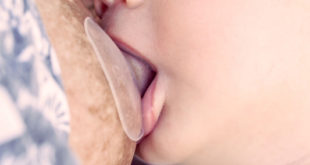Ask Anne…

Question: My baby is three months old and is exclusively breastfed. Recently, I developed mastitis, and my doctor prescribed an antibiotic. Every time I’ve taken an antibiotic in the past, I’ve developed a vaginal yeast infection. I’d like to keep that from happening again, especially since I’ve read that I might get yeast on my nipples and my baby might get thrush in his mouth. I don’t like taking drugs unless I really need them, so are there any natural treatments I can use instead?
In my experience, these alternative treatments are most effective as a preventive measure, or when used in the early stages of an infection, when the mom is experiencing nipple tenderness and burning, but no pain on the inside of the breast. Once the yeast has really taken hold and has invaded the milk ducts, causing sharp shooting pains inside the breast, it is considered a “systemic infection”, and more aggressive treatment with an oral antifungal medication such as fluconazole (Diflucan) is much more likely to be effective than over the counter or herbal remedies.
None of these alternative treatments are likely to completely cure a full-blown infection of the nipples or milk ducts, but they are often helpful in the early stages of a yeast infection, or in addition to treatment with OTC or prescription medications.
Some of the ingredients in these treatments are available at drug stores and some have to be prescribed by a doctor, but most are available only at health food stores. Some are harder to find than others, so you may want to do some calling around and checking for availability before making a trip to the drug or health food store. Some stores are willing to order the herbs or medications for you if they don’t have them in stock, and then there’s always Amazon. They have just about everything you can think of.
Here’s an overview of alternative treatments for yeast infections in the nursing mother:
- Acidophilus (Lactobacillus acidophilus): Acidophilus (probiotics) helps replace the “good” bacteria that help reduce the overgrowth of yeast, and restore the natural balance in the body. These good bacteria are often killed off when you or your baby takes an antibiotic, because the antibiotic kills off the ‘good’ bacteria along with the ‘bad’ bacteria that are causing the infection. Probiotics are measured in billions of active cultures instead of in miligrams (mg). The average daily dose for babies is 1-3 billion active cultures per day, (usually around a tsp each day) and it’s considered very safe, even at those doses that sound crazy high. Moms can take up to three capsules of acidophilus three times a day (10-40 billion live cultures). Babies can be treated with acidophilus diluted in breast milk or water and swabbed in their mouths, or you can dip your finger in the powder and let your baby suck it off Health food stores also carry acidophilus products made especially for babies (look for brands that contain more ‘bifidus’ than ‘lactobacillus’, and are dairy free), and you can also find them on Amazon.
-
Vinegar: White distilled vinegar helps change the pH levels on the nipples and creates an environment hostile to the overgrowth of yeast. After nursing, rinse the nipples in a solution of 1/4 cup of vinegar in a cup of water. If the nipples are extremely sore, and this solution is too strong, use one tablespoon in a cup of water. Dab it on your nipplde with a cotton ball, then let them air dry and don’t wash it off before nursing. Use this treatment for at least four times a day, and continue treatment for at least a week after all the symptoms are gone.
- Gentian violet: This is an old, tried and true antifungal/antiseptic which is often very effective, especially if the tissue on the nipples is ulcerated or cracked. Use once a day for 4 to 7 days. If pain is gone after 4 days, stop using the gentian violet. If better, but not gone after four days, continue for 7 days. Stop after 7 days no matter what. Gentian violet comes as a 2% solution in water, but should be diluted to 1% (just add water half and half) because the 2% solution may be too strong and can cause skin irritation. Gentian violet can also be used in the baby’s mouth or diaper area.
- All Purpose Nipple Ointment: Dr. Jack Newman recommends this ointment for all types of nipple soreness. If your doctor will prescribe it and your pharmacist will mix it up for you, this is an excellent treatment for yeast on the nipples, especially if the skin is broken. Mix mupirocin (an antibiotic) 2% ointment (not cream): 15 gm, with betamethasone (a cortocosteroid to decrease inflammation) 0.1% ointment (not cream): 15 gm, and add miconazole powder so that the final concentration is 2% miconazole. Sometimes it is helpful to add ibuprofen powder as well, so that the final concentration of ibuprofen is 2%. This combination gives a total volume of approximately 30 gm. Clotrimazole powder to a final concentration of 2% may be substituted if miconazole powder is not available. Using powder gives a better concentration of the antifungal agents (miconazole or clotrimazole), and the concentrations of the mupirocin and betamethasone remain higher
Antifungals
- Garlic: take triple strength deodorized garlic (three tablets three times daily for at least two weeks). Cold-pressed, liquid, aged garlic (Kyolic brand) is the most potent.
- Caprylic acid: take two to capsules three to four times daily for two weeks. It has strong antifungal properties.
-
Coconut oil: Make sure it’s organic, cold pressed virgin coconut oil. Take 1-2 tablespoons of coconut oil each morning, or it can be used in recipes as a substitute for other cooking oils or butter. You can also apply it to your nipples and to treat thrush in baby’s mouth. It can be mixed with tea tree oil and applied to baby’s bottom to treat a yeasty diaper rash. If you’re worried about baby being allergic to nuts, you should be aware that coconuts are classified as a fruit, not a nut. Most people allergic to tree nuts or legumes like peanuts can safely ingest coconut.
-
Australian tea tree oil: add several to a cup of water and apply to the breasts several times a day. Rinse off before feeding.
- Goldenseal: 1-2 grams dried bark, 1 ½ teaspoons (4-6 ml) of tincture, or 250-500 mg of powdered extract three times a day. This treatment is effective in killing off yeast, but may cause gas in the intestines as the yeast dies off. It does have a very bitter taste.
- Maitake tea: This mushroom tea can help re-balance the intestinal flora. Drink strongly brewed tea (4-6 cups per day) for two weeks.
- Plaintain: Soak the seeds overnight in warm water, and apply the gel that it produces to the nipples.
- Lecithin: Take two 250 mg capsules three times each day, or the equivalent in capsule form sprinkled on food. Lecithin can also help prevent and treat the plugged ducts that often accompany yeast infections.
- Pau d’arco: this is a nasty tasting tincture, but it has strong antifungal properties and has been used for many years in other countries. It comes in tincture form, and the dosage is 20-30 drops four times a day.
- Barberry: Take 1-2 grams of dried barberry bark, 1-½ teaspoons (4-6 ml) of tincture, or 250-500 mg of powdered extract three times a day.
- Grapefruit seed extract: Mix 5-10 drops of Citricidal Grapefruit Seed Extract (not grape seed extract) in one ounce of distilled water. Swab the mixture in the baby’s mouth before nursing, and on your nipples after nursing, once every waking hour. If you don’t see improvement by the second day, increase the mixture to 15 or 20 drops per ounce of water. If your baby has yeast in the diaper area, you can put the solution into a spray bottle or swab the affected area with every diaper change. GSE also comes in capsule form (take 250 mg three times daily).
- Dietary changes: Reduce or eliminate your intake of sugar, beer or bubbly alcoholic drinks, bread, wheat, cheese, and any fermented food products.
- Treat your partner: Although men are much less susceptible to yeast infections than women (the dry skin of the penis is much less of a yeast friendly environment than the moist tissue of the vagina or the nipples), it is possible for your partner to have yeast and to re-infect you if he isn’t treated. If you are having trouble getting rid of yeast (especially vaginal yeast), suggest that he use an over-the-counter vaginal cream such as Monistat to treat his penis. There is some evidence that adding a drop or two of vinegar to the cream (not straight vinegar, which burns like crazy) will help clear up the infection faster.
General Immune system boosters
- Non-yeast-based vitamin B complex
- Zinc: 45 mg per day
- Vitamin C: take to the point where loose stools occur, then reduce the dosage.
- Echinacea capsules may help boost the immune system.
You can find out more information about treating yeast infections in both mother and baby in the article “Information Sheet and Care Plan for Yeast Infections“. Yeast is becoming an increasingly common and extremely painful problem for nursing mothers, and often requires persistence in trying a variety of strategies to overcome it. The key is not to give up – when one treatment doesn’t work, try another until you find out what works for you.
Disclaimer: Herbs are drugs, and should be used with caution. Information is presented for educational purposes only and is not intended to offer medical advice. Always consult your health care provider before starting therapies including vitamins, herbs, or other supplements.
References:
Good News for Breastfeeding Moms: Treating and Preventing Thrush, Dr. Chris Hafner-Eaton, Mothering (March/April 2000)
Dr. Jack Newman’s Guide to Breastfeeding, Dr. Jack Newman, MD, FRCPC (2000)
Preventing and treating the side effects of antibiotics from AskDrSears.com
Pat Jacobsen, IBCLC: Midwifery Today E-News (Vol. 1, Issue 53, Dec. 1999)
Coconut Oil: Health Benefits, Nutritional Breakdown, Risks: Megan Ware RDN LD, Medical News Today (2015)
In vitro antimicrobial properties of coconut oil on Candida; Ogbolu DO, Oni AA, Daini OA, Oloko; AP.J Med Food. 2007 Jun;10(2):384-7
Tree Nut Allergy, American College of Allergy, Asthma & Immunology (ACAAI) (2015)
Anne Smith, IBCLC
Breastfeeding Basics
Alternative treatments are most effective when used in the early stages of an infection, when you are experiencing nipple tenderness and burning, but no pain on the inside of the breast. Once the yeast has invaded the milk ducts, causing sharp shooting pains inside the breast, it is considered a “systemic infection”, and more aggressive medical treatment is more likely to be necessary.
 Breastfeeding Basics
Breastfeeding Basics



